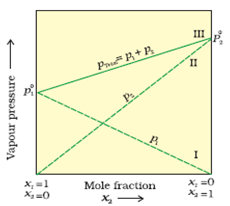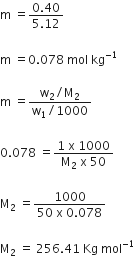 Short Answer Type
Short Answer TypeWrite the equations involved in the following reactions:
(i) Reimer - Tiemann reaction
(ii) Williamson’s ether synthesis
What is a biodegradable polymer? Give an example of biodegradable aliphatic polyester.
Shanti, a domestic helper of Mrs. Anuradha, fainted while mopping the floor. Mrs. Anuradha immediately took her to the nearby hospital where she was diagnosed to be severely ‘anaemic’. The doctor prescribed an iron rich diet and multivitamins supplement to her. Mrs. Anuradha supported her financially to get the medicines. After a month, Shanti was diagnosed to be normal.
(i) What values are displayed by Mrs. Anuradha?
(ii) Name the vitamin whose deficiency causes ‘pernicious anaemia’.
(iii) Give an example of a water soluble vitamin.
Give reasons for the following:
(i) Ethyl iodide undergoes SN2 reaction faster than ethyl bromide.
(ii) (±) 2-Butanol is optically inactive.
(iii) C -X bond length in halo benzene is smaller than C -X bond length in CH3- X.
(i) What class of drug is Ranitidine?
(ii) If water contains dissolved Ca2+ ions, out of soaps and synthetic detergents, which will you use for cleaning clothes?
(iii) Which of the following is an antiseptic?
0.2% phenol, 1% phenol
 Long Answer Type
Long Answer Type(a) State Raoult’s law for a solution containing volatile components.
How does Raoult’s law become a special case of Henry’s law?
(b) 1·00 g of a non-electrolyte solute dissolved in 50 g of benzene lowered the freezing point of benzene by 0·40 K. Find the molar mass of the solute. (Kf for benzene = 5·12 K kg mol-1)
(a) Let p1, p2 = Partial vapour pressure of two volatile components 1 and 2 of a mixture ![]()
= Vapour pressure of pure components 1 and 2
x1, x2 = Mole fractions of the components 1 and 2
ptotal = Total vapour pressure of the mixture then Raoult’s law can be stated as: For a solution of volatile liquids, the partial vapour pressure of each component in the solution is directly proportional to its mole fraction.
That is, for component 1,
p1 ![]() x1
x1
And, p1 = ![]() x1
x1
For component 2,
P2 = ![]() x2
x2
According to Dalton’s law of partial pressures,

The plot of vapour pressure and mole fraction of an ideal solution at constant temperature is shown below.

Raoult’s Law as a Special Case of Henry’s Law
According to Raoult’s law, the vapour pressure of a volatile component in a given solution is p1 =![]() x1
x1
According to Henry’s law, the partial vapour pressure of a gas (the component is so volatile that it exists as gas) in a liquid is
p = KH x
It can be observed that in both the equations, the partial vapour pressure of the volatile component varies directly with its mole fraction. Only the proportionality constants KH and are different. Thus, Raoult’s law becomes a special case of Henry’s law in which KH is equal to .
(b) Given: w2 = 1g (weight of solute)
w1 = 50 g (weight of solvent)
Tf = 0.40 K
kf = 5.12 K Kg mol-1
M2 =? (Molar mass of solute)
Using the equation,
Tf = Kfm (where m is molality)
0.40 = 5.12 x m

